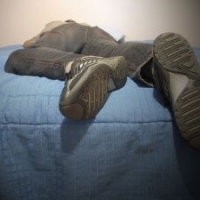Smart Devices Looking to Make You Sleep Better

The wearable craze came in hot, but it’s seemingly fizzled out in a flash. From time to time you’ll see a Nike FuelBand strapped around a runner’s wrist, but smart tech that you wear out just hasn’t grabbed as many consumers as some companies first expected.
However, that doesn’t mean that people aren’t looking for creative pieces of hardware to track different aspects of daily health. A new crowd-funded project wants to go beyond listing your burned calories and accelerated heart rate. The now fully funded Sense device offers personal tracking for sleep behavior and stands as one of the first products that uses your sleep patterns to encourage better rest.
Developers have created applications like Sleep Cycle to determine the best window of time for you to wake up based on average sleeping patterns, but this type of software isn’t exactly designed to cater to unique users.
Sense, on the other hand, uses an alarm-like device in concert with a sleep-tracking sensor and mobile app to gather data like noise, light, temperature, humidity, and particles in the air for the purpose of monitoring your sleep. The programmers currently working on the project are aiming to eliminate that groggy, 6:00 a.m. feeling from your life through detailed environmental data.
If a fire alarm woke you up during the wee hours of the morning, the app will take note and adjust your sleep score accordingly. Most importantly, if you begin to naturally stir around 7:00 a.m. even though you’ve set an alarm for 7:30 a.m., the sensitive monitor that you’ve placed in your pillow will tell the alarm sitting just feet away to sound. This way, you wake up when your body is telling you to—not after.
The increased availability of 3D printers has allowed the team to produce prototype after prototype for this smart alarm, but this is still a work in progress. Sure, Sense is a bit more advanced than the sleep application tied to the wearable Jawbone, but we’re still very early in the process of perfecting health-related technology. People are coming up with more polished alternatives every few months.
The Sense device will become a real product someday soon, as the campaign has earned more than a million dollars, which is ten times its initial goal of $100,000. Still, whether or not this Wi-Fi and Bluetooth-enabled gadget will actually catch on is another story as wearables haven’t quite hit the mark recently.
So, for now, maybe it’s best to keep the tech on the nightstand and not on your wrist.

